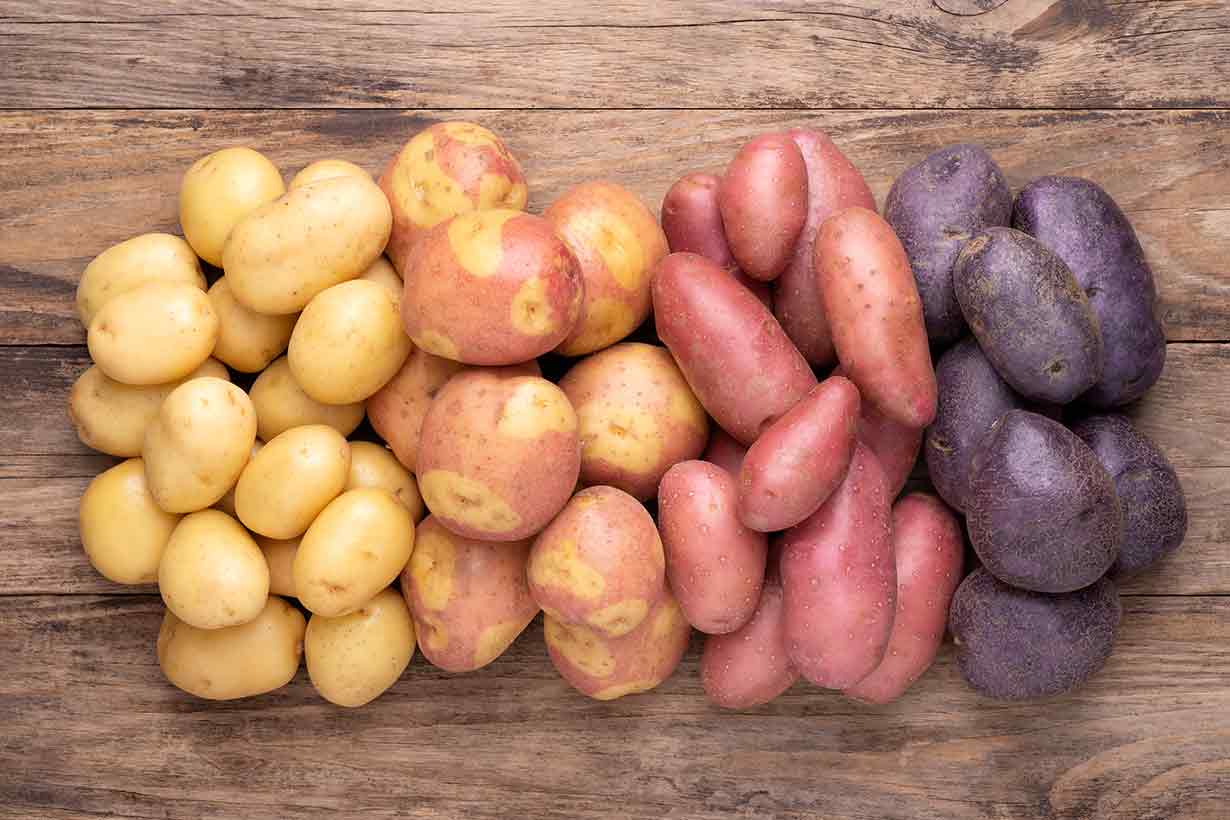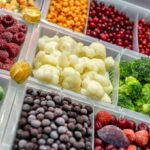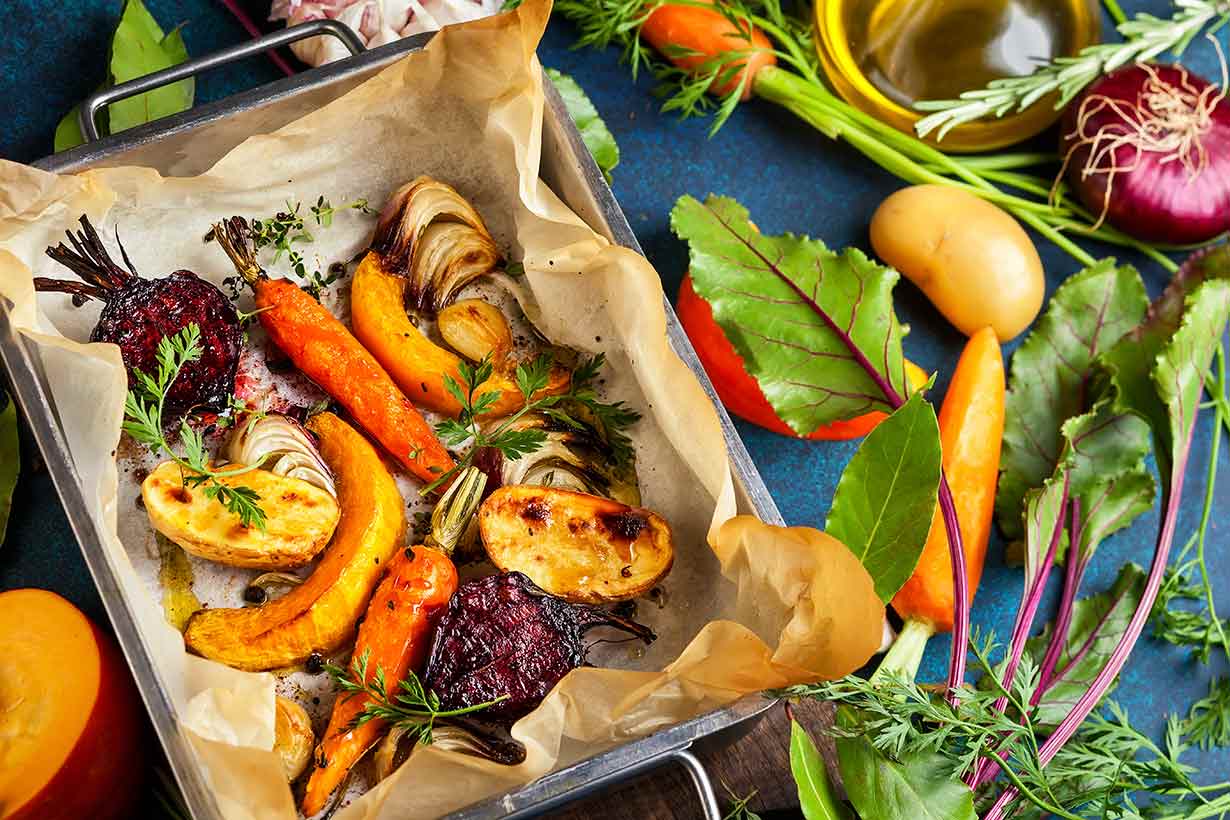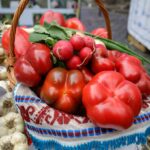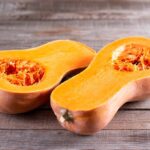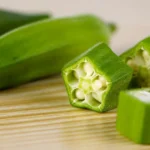Pumpkins are large, bright orange fruits synonymous with the fall and Halloween season. While botanically a fruit, we treat pumpkins as vegetables for culinary purposes.
Beyond its high fiber, vitamin A, and vitamin C content, pumpkin is a significant source of carotenoids. It also contains unique compounds such as cucurmosin, which ongoing research is exploring for its potential bioactivities.
This profile suggests pumpkin may have benefits for maintaining healthy vision, and active research is exploring the role of its constituents in potentially reducing the risk of specific cancers.
This article explains what the latest science says, detailing the nutritional properties of pumpkin and its potential benefits and drawbacks.
Table of contents
Potential Benefits
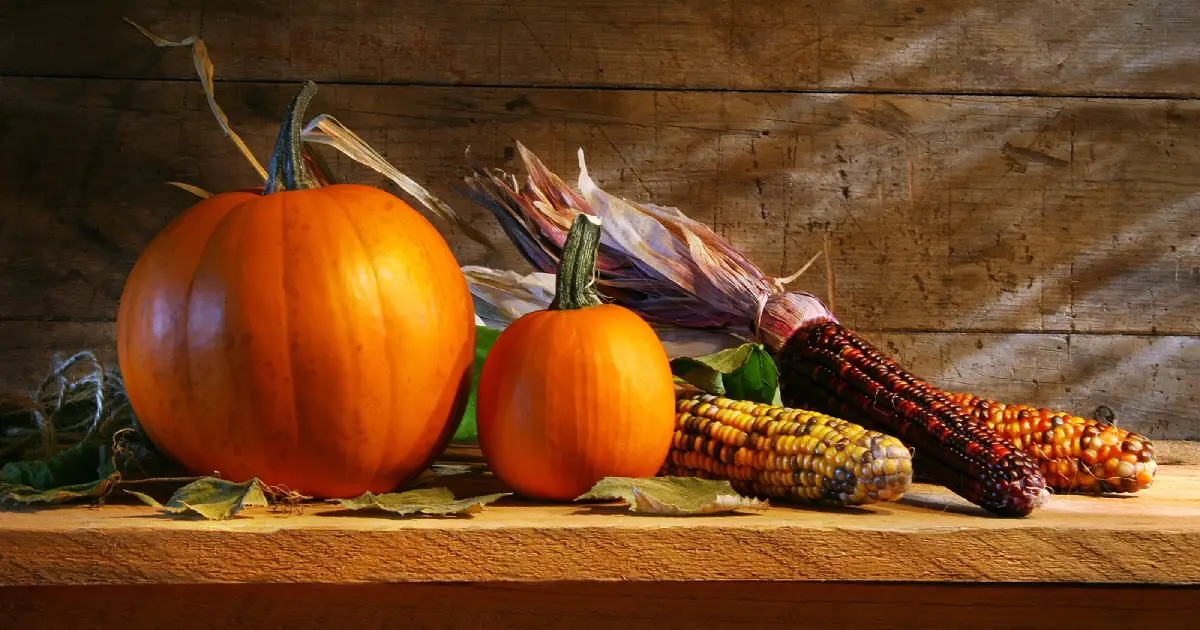
First, here are some of the key potential benefits that pumpkin may confer.
Pumpkin and Vision
Pumpkin is an exceptional source of the carotenoids beta-carotene, alpha-carotene, lutein, and zeaxanthin.
These carotenoids play a role in eye health and maintaining healthy vision. Including pumpkin in the diet will provide consumers with a significant intake of these eye-protective carotenoids.
There is relatively consistent evidence for lutein and zeaxanthin having benefits for vision:
- A 2025 randomized controlled trial (a study testing the effects of something in human participants) found that lutein and zeaxanthin supplementation improved symptoms of visual health in high users of electronic screens.
- A 2024 meta-analysis of 38 randomized controlled trials (a type of study that analyzes all the research in the area), demonstrated that lutein and zeaxanthin improved several markers of eye health, including macular pigment optimal density, contrast sensitivity, and recovery time from exposure to bright light. Note: the authors advised caution due to low-quality evidence for some of the findings.
- A 2021 systematic review (a study that examines all available evidence on the topic) examined the role of carotenoids in managing age-related macular degeneration, a condition that damages the eye. The review found consistent evidence from observational studies and randomized trials linking lutein and zeaxanthin supplementation to potentially delaying—or preventing—loss of vision.
Key point: Pumpkin is high in key carotenoids like lutein and zeaxanthin which are important for eye health.
Carotenoid Intake and Cancer Risk
Pumpkin provides high levels of alpha-carotene and beta-carotene.
These carotenoids convert to provitamin A (retinol), but also have some potential benefits for our overall health due to their anti-inflammatory, antioxidant, and anti-tumor properties.
Recent Findings on Carotenoid Intake and the Risk of Specific Cancers
- A 2020 in vitro (test tube) study showed that a carotenoid-enriched pumpkin extract delayed the growth of leukemia cells. Compared to untreated cells, the cells exposed to the pumpkin extract had a 40% delay in leukemia cell growth.
- A 2025 umbrella review of systematic reviews examined the risk factors for gastric cancer, finding that beta-carotene was associated with a significantly reduced risk. However, a 2024 systematic review found that the evidence doesn’t support beta-carotene supplementation for prevention.
- A 2024 systematic review of observational studies found an association between the highest blood levels of carotenoids and the lowest risk (-24%) of breast cancer. However, the certainty of evidence was rated from low to very low, and more research is necessary.
- A 2022 meta-analysis of 22 studies found that both high dietary intakes and blood levels of beta-carotene, alpha-carotene, and lycopene were associated with a reduced colorectal cancer risk.
- A 2020 meta-analysis of 14 studies found an association between the highest intakes of beta-carotene and a 38% lower risk of esophageal cancer.
- A 2020 meta-analysis found a strong dose-response relationship between carotenoid blood levels and a lower risk of bladder cancer. Every 1 micromole (1 uM) per liter increase in circulating alpha-carotene, beta-carotene, lutein, and zeaxanthin was associated with a 27–76% reduced risk of bladder cancer.
While the evidence is mixed and ongoing, the overall research body suggests that higher dietary intakes of carotenoids from food are generally associated with a lower cancer risk.
Key point: High dietary intakes of carotenoids from foods like pumpkin have been linked to a lower risk of certain cancers.
Pumpkin Contains Bioactive Proteins
Pumpkin contains unique bioactive proteins, including cucurmosin and CUS245C, that may have health benefits. Research is ongoing into their potential medical use when isolated and extracted from pumpkin.
Research has found that:
- Cucurmosin has an inhibitory effect on pancreatic cancer cells in laboratory studies.
- CUS245C has demonstrated an ability to induce cell death in chemotherapy-resistant cancer cells in in vitro (test tube) studies. It has also shown anti-tumor effects in mice studies.
Important note: These findings come from studies using high-strength extracts in test tube and animal models, which is quite different from simply eating whole pumpkin. The small amounts of cucurmosin and CUS245C present in pumpkin flesh may provide a degree of benefit, but this is difficult to ascertain.
Key point: Pumpkin contains compounds that are being researched for their potential anti-cancer properties. However, it is difficult to ascertain whether the small amounts in pumpkin are beneficial.
Potential Drawbacks
Pumpkin is a nutrient-rich, healthy vegetable choice that carries little risk of downsides for the majority of people.
However, in rare instances, as with all foods, it may have some potential drawbacks. Here we look at what has been recorded scientifically in this context.
Carotenemia
Since pumpkin is such a concentrated source of orange-pigmented carotenoids, habitually consuming large amounts over an extended period can potentially lead to a condition called carotenemia.
Carotenemia is characterized by a slight orange tint developing in the skin. It is thought that consuming over 30 mg of carotenoids daily over several months is necessary to develop carotenemia.
For context, a 245-gram cup of cooked pumpkin contains approximately 13 mg of total carotenoids. Almost 12 mg of this is from beta-carotene and alpha-carotene.
Carotenemia is a harmless condition that results from the overconsumption of carotenoids, regardless of the food source—whether from carrots, pumpkin, or sweet potatoes. Fortunately, the condition is simple to resolve by reducing carotenoid intake until the skin’s pigment returns to normal.
Rare Allergies
While allergy to pumpkin is very rare, just as with any food, allergic reactions are possible in a minority of people.
There have been several published case studies documenting severe allergic reaction to pumpkin seeds:
There has also been a case report of an allergic reaction to pumpkin soup made with pumpkin flesh.
Any individual who suspects they may have an allergy to pumpkin should consult with their healthcare provider.
Rare Bezoars From Pumpkin Seeds
While this relates specifically to pumpkin seeds rather than pumpkin flesh, pumpkin seeds have been documented as causing bezoars in very rare instances.
We can define a bezoar as a mass of undigested matter in the gastrointestinal tract—typically the stomach—that can block digestion. In the case of pumpkin seeds, this happens because their shells are tough and difficult to digest.
When consuming a large amount of pumpkin seeds without chewing them properly, the outer shells aren’t adequately broken down for digestion. This tough matter can then form a bezoar.
Here are some documented case reports of bezoars developing from pumpkin seed consumption:
- Seedy business: a pumpkin seed bezoar
- Report of a case of pumpkin seed bezoar rectal impact
- Pumpkin seed bezoar causing lower gastrointestinal bleeding
- Rectal bezoar caused by pumpkin seed consumption
Pumpkin Nutrition Facts
In this next section, we provide the full nutritional values and percent daily values (% DV) for cooked pumpkin per 100 grams and per 245-gram cup.
The nutritional data is sourced from USDA FoodData Central’s entry for cooked pumpkin.
Calories and Macronutrients
| Nutrient | Per 100g | Per 245g cup |
|---|---|---|
| Calories | 20 kcal | 49 kcal |
| Carbohydrates | 4.9g (2% DV) | 12.0g (4% DV) |
| Fiber | 1.1g (4% DV) | 2.7g (10% DV) |
| Sugars | 2.08g | 5.1g |
| Fat | 0.07g (<1% DV) | 0.17g (<1% DV) |
| Saturated fat | 0.04g (<1% DV) | 0.09g (<1% DV) |
| Monounsaturated fat | 0.01g | 0.02g |
| Polyunsaturated fat | <0.01g | 0.01g |
| Omega-3 | <0.01g | <0.01g |
| Omega-6 | <0.01g | <0.01g |
| Protein | 0.72g (1% DV) | 1.76g (4% DV) |
| Cholesterol | 0 mg (0% DV) | 0 mg (0% DV) |
Vitamins
| Vitamin | Per 100g | Per 245g cup |
|---|---|---|
| Vitamin A (RAE) | 288 mcg (32% DV) | 706 mcg (78% DV) |
| Vitamin C | 4.7 mg (5% DV) | 11.5 mg (13% DV) |
| Vitamin D | 0 mcg (0% DV) | 0 mcg (0% DV) |
| Vitamin E | 0.8 mg (5% DV) | 1.96 mg (13% DV) |
| Vitamin K | 0.8 mcg (1% DV) | 1.96 mcg (2% DV) |
| Thiamin (B1) | 0.03 mg (3% DV) | 0.08 mg (7% DV) |
| Riboflavin (B2) | 0.08 mg (6% DV) | 0.19 mg (15% DV) |
| Niacin (B3) | 0.41 mg (3% DV) | 1.01 mg (6% DV) |
| Pantothenic acid (B5) | 0.20 mg (4% DV) | 0.49 mg (10% DV) |
| Vitamin B6 | 0.04 mg (2% DV) | 0.11 mg (6% DV) |
| Folate (B9) | 9 mcg (2% DV) | 22 mcg (6% DV) |
| Vitamin B12 | 0 mcg (0% DV) | 0 mcg (0% DV) |
| Choline | 6.2 mg (1% DV) | 15.2 mg (3% DV) |
Minerals
| Mineral | Per 100g | Per 245g cup |
|---|---|---|
| Calcium | 15 mg (1% DV) | 36.8 mg (3% DV) |
| Iron | 0.57 mg (3% DV) | 1.4 mg (8% DV) |
| Magnesium | 9 mg (2% DV) | 22 mg (5% DV) |
| Phosphorus | 30 mg (2% DV) | 73.5 mg (6% DV) |
| Potassium | 230 mg (5% DV) | 564 mg (12% DV) |
| Sodium | 1 mg (<1% DV) | 2.45 mg (<1% DV) |
| Zinc | 0.23 mg (2% DV) | 0.56 mg (5% DV) |
| Copper | 0.09 mg (10% DV) | 0.22 mg (24% DV) |
| Manganese | 0.09 mg (4% DV) | 0.22 mg (10% DV) |
| Selenium | 0.2 mcg (<1% DV) | 0.49 mcg (1% DV) |
Summary
Pumpkin is nutrient-rich, low in calories, and provides high levels of fiber, B vitamins, vitamins A, C, and E, and copper.
In addition, research suggests that due to its high carotenoid content, it may support healthy vision and, potentially, lower the risk of specific cancers, according to associations found in systematic reviews.
Overall, pumpkin is a healthy dietary choice that can be included in the majority of diets without issue.
References
Full List of Scientific References
(Click to Expand)
All citations used within this article are listed below, with full details for each scientific source.
- Antonela Nincevic Grassino et al. (2023). Carotenoid Content and Profiles of Pumpkin Products and By-Products. Source link
- A. L. Lopresti et al. (2025). The effect of lutein/zeaxanthin on eye health, eye strain, sleep quality, and attention in high electronic screen users: a randomized, double-blind, placebo-controlled study. Source link
- Weili Hu et al. (2024). Effect of Antioxidant Supplementation on Macular Pigment Optical Density and Visual Functions: A Systematic Review and Network Meta-Analysis of Randomized Controlled Trials. Source link
- Drake W. Lem et al. (2021). A Systematic Review of Carotenoids in the Management of Age-Related Macular Degeneration. Source link
- Shao-Hua Yan et al. (2025). Association of serum carotenoids and SII among general people, based on NHANES 2001–2006. Source link
- Stefania Moccia et al. (2020). A carotenoid-enriched extract from pumpkin delays cell proliferation in a human chronic lymphocytic leukemia cell line through the modulation of autophagic flux. Source link
- Jin Long Liang et al. (2025). Risk factors for gastric cancer: an umbrella review of systematic reviews and meta-analyses. Source link
- Wei Han et al. (2024). Not all carotenoids can reduce the risk of gastric cancer: a systematic review with meta-analysis. Source link
- Maryam Karim Dehnavi et al. (2024). The Association between Circulating Carotenoids and Risk of Breast Cancer: A Systematic Review and Dose–Response Meta-Analysis of Prospective Studies. Source link
- Xiaoyong Han et al. (2022). Association of Retinol and Carotenoids Content in Diet and Serum With Risk for Colorectal Cancer: A Meta-Analysis. Source link
- Kang Li et al. (2020). The association of dietary beta-carotene and vitamin A intake on the risk of esophageal cancer: a meta-analysis. Source link
- Shenghui Wu et al. (2020). Carotenoid Intake and Circulating Carotenoids Are Inversely Associated with the Risk of Bladder Cancer: A Dose-Response Meta-Analysis. Source link
- Binbin Wei et al. (2020). Chemotherapeutic efficacy of cucurmosin for pancreatic cancer as an alternative of gemcitabine: a comparative metabolomic study. Source link
- Caiyun Zhang et al. (2020). Novel cucurmosin-based immunotoxin targeting programmed cell death 1-ligand 1 with high potency against human tumor in vitro and in vivo. Source link
- National Center for Biotechnology Information (n.d.). Carotenaemia. Source link
- USDA FoodData Central (n.d.). Pumpkin, cooked, boiled, drained, without salt. Source link
- Mark S. La Shell, MD. et al. (2010). Allergy to Pumpkin and Cross-Reactivity to Pollens and Other Foods. Source link
- Halime Yagmur et al. (2025). Eat the fruit, do now swallow the seed: A rare case of Cucurbitaceae allergy causing anaphylaxis. Source link
- Julia Gawryjolek M.D. et al. (2021). Anaphylaxis after consumption of pumpkin seeds in a 2-y-old child tolerant to its pulp: A Case Study. Source link
- Rayna Doll et al. (2017). IGE-mediated anaphylactic shock caused by pumpkin seed in an adult. Source link
- M. M. Hagendorens et al. (2009). Allergy from pumpkin soup. Source link
- MedlinePlus (n.d.). Bezoars. Source link
- Emily E Cantor et al. (2024). Seedy business: a pumpkin seed bezoar. Source link
- Maurizio Gentile et al. (2022). Report of a case of pumpkin seed bezoar rectal impact. Source link
- Nehme, Fredy et al. (2017). Pumpkin seed bezoar causing lower gastrointestinal bleeding. Source link
- Janaki R. Manne et al. (2012). Rectal bezoar caused by pumpkin seed consumption. Source link

